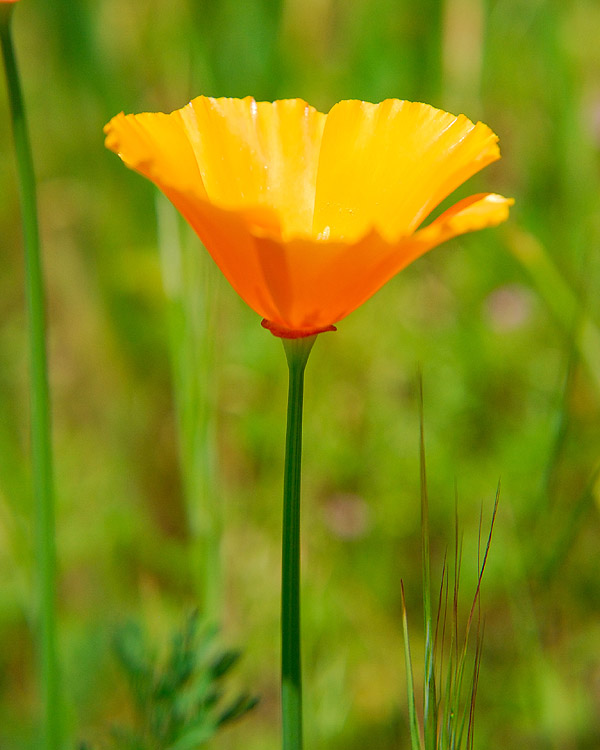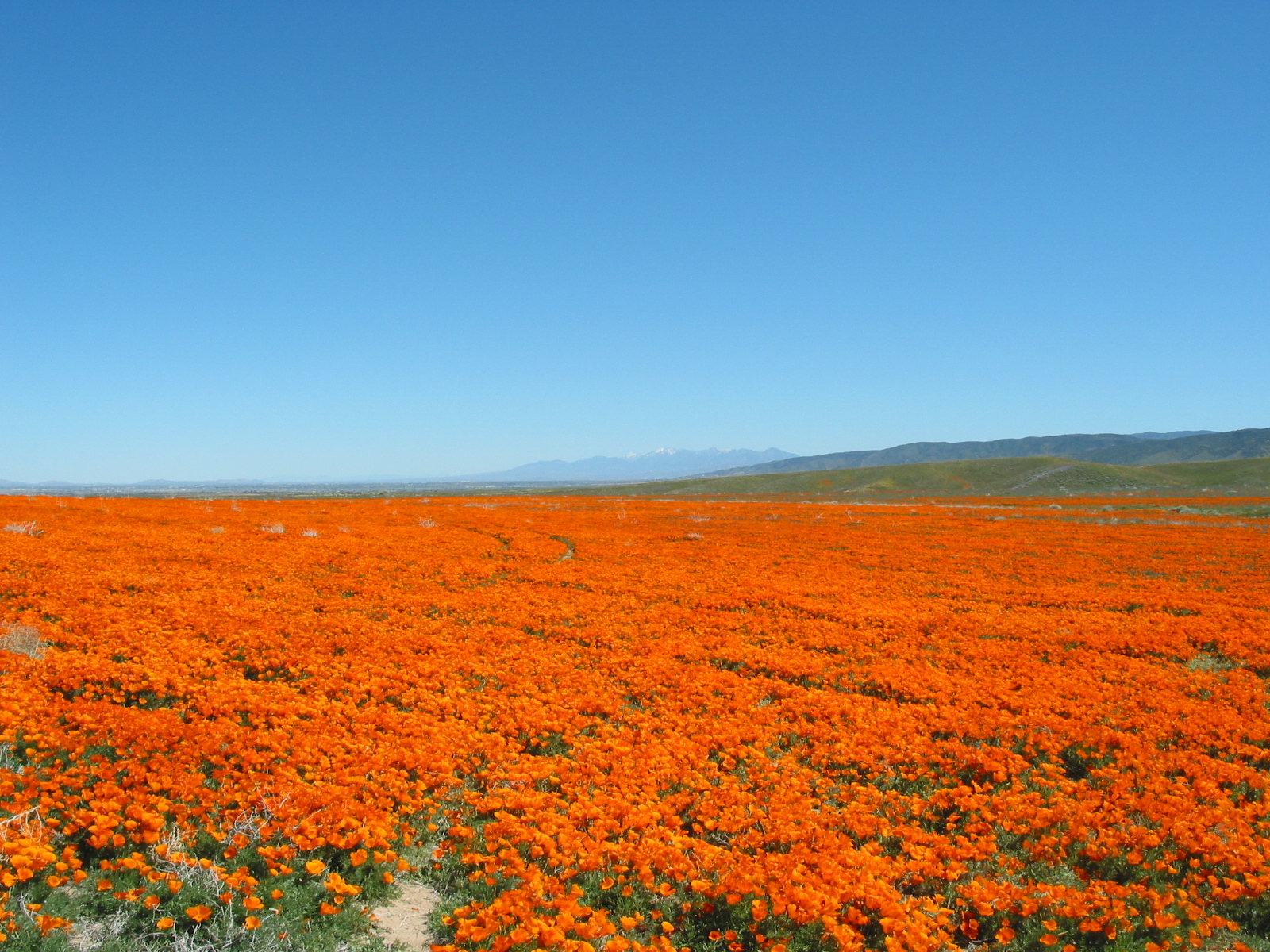Form and Function
Eschscholzia californica, more commonly known as the California poppy, has adapted in many various ways to its environment. It can be broken down into different species and variants, but E. californica generally produces straight and upright yellow and orange flowers on a free standing stem with four petals (Master gardener 2010). They have greenish-blue leaves and only grow to be between 12 and 18 inches tall, depending on what environment they are in (Master Gardener 2010). E. californica has adapted to close up at night time and open up again the next morning (Master Gardener 2010).
Photo courtesy of Curbstone Valley Farm.
Two common populations that can categorize the E. californica are invasive and native populations. Invasive populations reside across Mediterranean environments worldwide such as South Africa, Chile, and Australia (Veliz et al. 2012). Chile, however, is the most commonly known area for the invasive E. californica (Veliz et al. 2012). The native populations of the E. californica are indigenous to the western part of the United States, ranging from southern parts of Washington all the way to Baja Sur, but more specifically California (Smith 2010). The invasive populations of the E. californica have responded to their environment over time. Studies have shown that shifts in genetic traits have taken place in invasive populations, and that these invasive plants are superior at making best use of reproduction and growth in open locations, by growing larger shoots and creating a larger number of seed capsules (Leger et al. 2003). Invasive populations are also known to reproduce and grow more quickly in disturbed areas in comparison to native populations (Leger et al. 2003). The native populations over time have also adapted to their surrounding environment, from the coast moving more inland (Leger et al. 2003). Due to the changing environment along the coastline for the native populations, E. californica is inclined to grow straighter and has flowers that are primarily yellow (Curbstone Valley Farm 2010). When looking more inland toward non-arid conditions, the native E. californica becomes more orange in color and taller in habitat (Curbstone Valley Farm 2010).
Photo courtesy of Flowerdale Nurseries.
At one time, E. californica was separated into 112 different types, but now only 10 species are recognized (Leger et al. 2003). Three common variants of E. californica are recognizable today (Leger et al. 2003). The first is an annual form with dormant seeds, var. peninsularis, that occurs in the desert areas of the San Joaquin Valley and leads into the southern most parts of California (Smith 2010, Leger et al. 2003). The second is var. crocea, which is a non-coastal perennial plant that generally grows slightly taller and has mainly orange flowers (Leger et al. 2003). The third and final variant is var. maritima (Smith 2010). It is a perennial plant that resides on coastal bluffs along and sand dunes ranging from San Miguel Island out to Monterey Co., California (Smith 2010). This variant is usually shorter and has predominately yellow rather than orange flowers (Leger et al. 2003).
In general, E. californica is a deep-rooted perennial that does best with full sun exposure, an available water source, and low competition for both soil resources and sunlight (Smith 2010). It establishes well on slightly disturbed locations, but is known to decline in regions where there is a higher competition for resources (Smith 2010). E. californica is also able to recover from harsh environment conditions, including droughts, high temperatures, and freezes (Smith 2010). E. californica is an interesting and beautiful plant that includes varied form and function.
*Home* *Life History*


